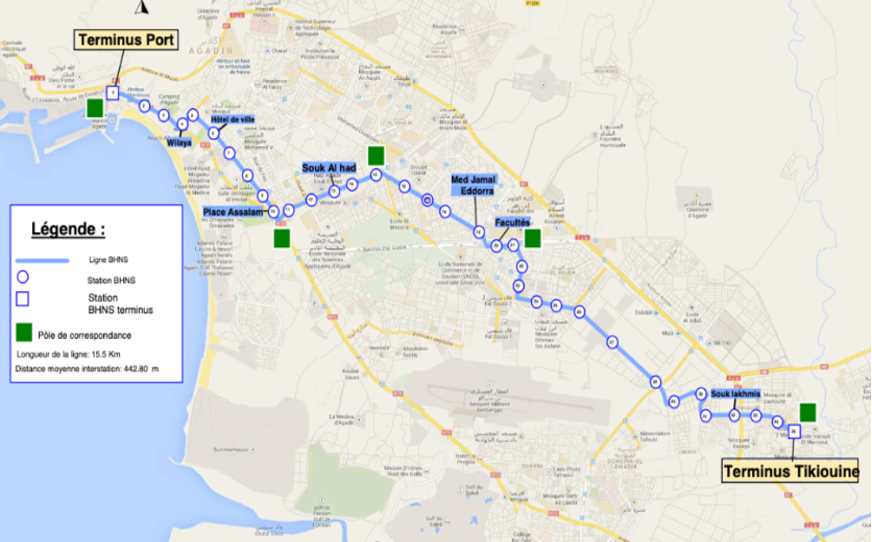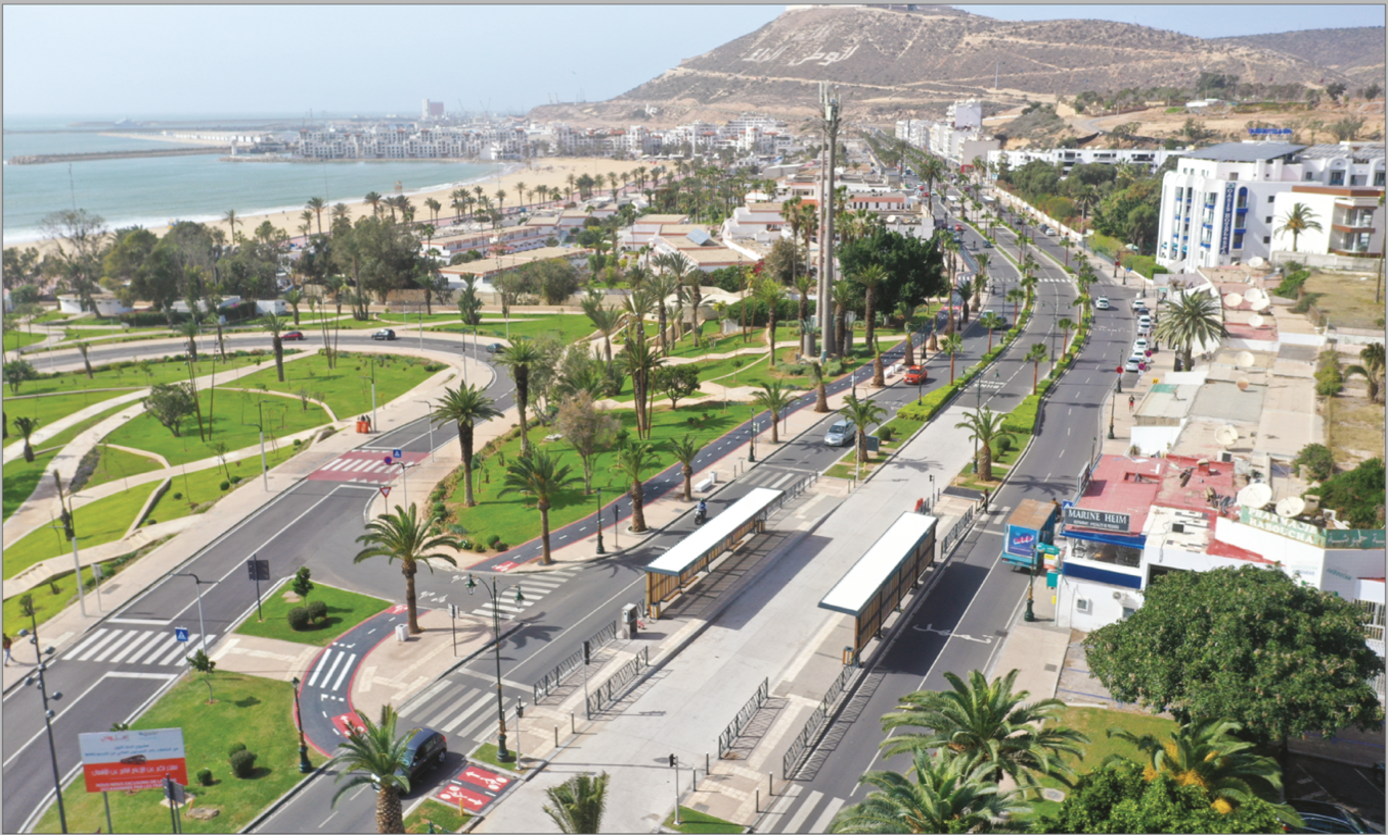
Close

Approach Words: Integrated City, Sustainability, Urban Livability
Public Policy Instruments: Financial Mechanism, Physical Intervention, Planning
The Agadir Bus Rapid Transit (BRT) system is a modern public transportation network that operates on dedicated lanes throughout the city utilizing high-capacity buses.1 Part of the Urban Development Program (PDU) for 2020-2024,i 2 this royal project3 aims to establish a sustainable, efficient, and environmentally friendly transit system, reinforcing Agadir’s position as an integrated economic hub in the Souss Massa region.4 5
The project aims to modernize and establish a sustainable, efficient and environmentally friendly bus transit network that provides residents and visitors with a reliable, frequent, and safe transportation option.6 It also seeks to strengthen the economic and tourism attractiveness of Agadir.7

Title: Map Showing the BRT Lines
Source: Click Here

Title: Map Showing the Implemented BRT Line 1 and its Stations
Source: Click Here

Title: 3D View Showing the BRT Route and Stations
Source: Click Here

Title: BRT Bus
Source: Click Here
The BRT system consists of 3 lines, with one currently under implementation and 2 under study:
The two new lines (L2 and L3) aim to complete the BRT network in the metropolitan area and serve other densely populated urban municipalities.13
The 18-meter articulated vehicles provide seating for 41 passengers and are equipped with ramps to accommodate individuals with reduced mobility. Moreover, they incorporate advanced ticketing to enhance passenger experience.16 These buses allow passengers to easily and quickly validate their tickets using contactless cards, the website, and a mobile app, along with real-time passenger information displayed on TFT screens.17 Furthermore, they feature an operational assistance and passenger information system (SAEIV) that enables real-time bus management, optimizing routes and reducing waiting times,18 in addition to installing surveillance cameras for enhanced safety and efficiency.19

The project was initiated by the Grand Agadir Local Development Company for Mobility and Urban Transport (GAMDU), the delegated project owner, on behalf of Souss-Massa Regional Council.ii 20 21 The feasibility study for L2 and L3 is being conducted by a consortium of Urbanica, Artelia Maroc and Artelia France,22 while the infrastructure development work of L1 are under implementation led by SNTRO and SATIMED.23 Operations will be handled by ALSA, a Spanish bus company.24
With total investment exceeding $1.6 billion,25 the project is funded by Union for the Mediterranean, Agence Francaise de Development (AFD) and the European Union.26
Project Link
https://www.amalway.ma/presentation-generale/
Endnotes
References